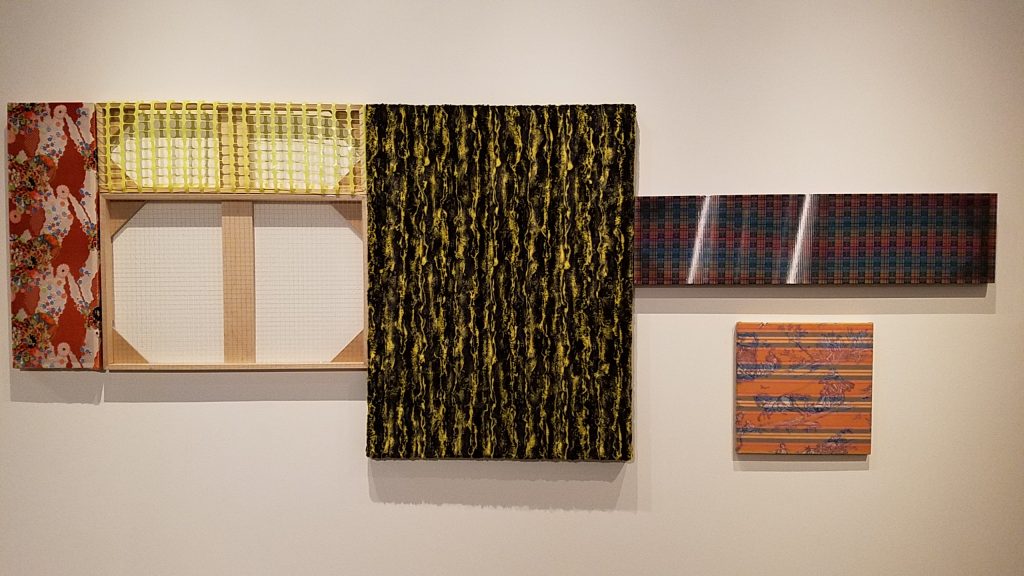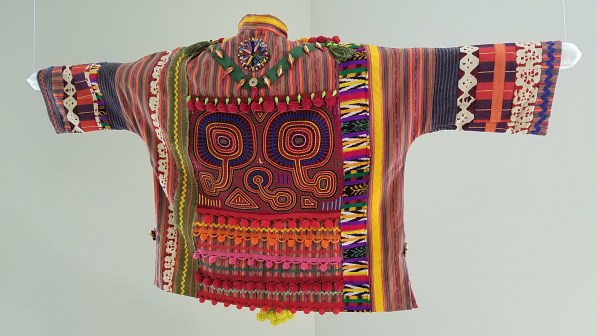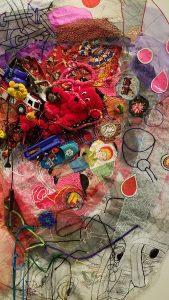Transformers: Blending Art and Science
Transformers is an art exhibit that blends the textile art of five different artists with popular topics in social and global sciences. This new exhibit is now on display at the Ruth Funk Center for Textile Arts until December 17, 2016.
Representing Global Deterioration
When you first enter the exhibit, you are immediately drawn into the mind and works of Julie Peppito. Peppito’s creations are the embodiment of sustainability. The objects in her pieces of art are items that she saved from the trash. She used these items to portray a graphic commentary on the Earth’s current condition. Pepptio combines small toys, fabrics, and oil drawings to create both small and large compositions. By using recycled goods, the artist believes she is telling her stories alongside the stories of each individual item’s creator. The use of recycled goods to depict the planets condition is her own poetic version of educating the masses of the dangers of pollution and toxic waste.
“Toxic Frock (This Changes Everything by Naomi Klein)” is one of my personal favorites. This frock includes a variety of fabrics, small beanie babies, and oil characters to depict creatures polluting their environment. The characters appear indifferent to the transition in the frock from light to dark. This indifference shows how little the characters care about destroying their environment. “Toxic Frock” directly relates to our world and our attitudes towards preserving its natural state.
Benefits of Global Recycling
The final room of the Transformers exhibit is a combination of two artist’s works, Jodie Mack and Garry Noland. Jodie Mack’s portion of the room is a digital collage. Two televisions show a collection of different recycled fabric patterns from across the globe. The video representation of textiles was intended to display the beauty in objects that are frequently overlooked and discounted. In viewing these collection of graphic patterns, I found it interesting to see the number of fabrics she showed. Along with showing a number of fabrics, they were displayed at varying speeds. With the knowledge that the photos are from recycled global fabrics, the illustrations begin to tell a story of all that is wasted.
Working with Art Parallels Working With Technology
Garry Noland’s portion of the exhibit tastfully describes the mix of working with the old and the new. He brings recycled materials back to life by combining old PVC pipe and foam with new paint, tape, and bubble wrap. Noland’s exhibit shows more than the positive outcomes of recycling. His section focuses on how humans and objects interact to create amazing things. His approach to art is that sometimes he molds the materials. Other times the material molds itself. This approach can easily be reflected in modern day with how humans can interact with all things like technology. We bring the old and the new together to mold our final projects. Some times calculations will be needed and other times, we will discover accidents that can change our perspectives on life.

As you move through the exhibit, you can encounter works of art from two other artists. Each artist represents their own messages about how to transform the world. Gerry Trilling depicts the taking in american culture and our busy lives through canvas and fabric. Ruth Funk donated some of her pieces of fabric jackets to the collection. Funk’s pieces focus on the combination of cultures from across the globe.

The newly opened Transformers exhibit is a great example of how to combine art and scientific principles and approaches. Walking through the 2nd floor of the Ruth Funk Center, you will gain an appreciation for the efforts that each artist has put into recycling materials and commenting on current day social and global sciences.








